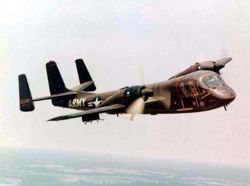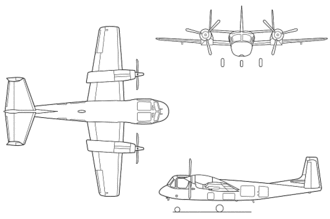PlaneSpottingWorld welcomes all new members! Please gives your ideas at the Terminal.
OV-1 Mohawk
The Grumman OV-1 Mohawk was a heavily armored and armed military observation and attack aircraft, designed for battlefield surveillance and light strike capabilities. It was of twin turboprop configuration, and carried two crewmembers with side-by-side seating. The Mohawk was intended to operate from short, unimproved runways in support of Army maneuver forces.
The prototype (YAO-1AF) first flew on April 14, 1959. The OV-1 entered production in October 1959 and served the U.S. Army in Europe, Korea, Vietnam, Central and South America, Alaska, and during Operation Desert Storm in the Middle East. The Mohawk was removed from U.S. Army service in September 1996.
Over the years, the mission and the aircraft underwent many changes. About 380 of the aircraft were built, and deployed in Vietnam, Germany, Desert Storm and Korea. Mohawk variants included the JOV-1 [armed reconnaissance], OV-1A, [visual and photographic], OV-1B [visual, photographic, and side-looking radar (SLAR) pod], the OV-1C [ visual, photographic, and infrared], and the OV-1D (SLAR pod and bigger wings), OV-1E [enlarged fuselage for more sensor operators or cargo], EV-1E [Special electronic intelligence installation] and RV-1E [advanced ELINT Reconnaissance]. A four-engined Model 134E with tiltwings and tail ducted fan for control for VTOL was proposed to the Army but not built. Model 134R was a tandem cockpit version offered to meet the LARA requirement, but the NA300 was chosen instead becoming the OV-10.
The Mohawk was intended to replace began as a joint Army-Marine program, through the Navy aeronautical bureau, for an observation/attack plan that would outperform the Cessna L-19 Bird Dog. In June of 1956, the Army issued Type Specificationn TS145, which called for the development and procurement of a two-seat, twin turboprop aircraft designed to operate from small, unimproved fields under all weather conditions. It would be faster, with greater firepower, and heavier armour than the Bird Dog, which had proved vulnerable during the Korean War. The Mohawk's mission would include observation, artillery spotting, air control, emergency resupply, naval target spotting, liaison, and radiological monitoring. The Navy specified that the aircraft must be capable of operating from small "jeep" escort class carriers (CVEs). The DoD selected Grumman Aircraft Corporation's G-134 design as the winner of the competition in 1957.
The Air Force did not like the armament capability of the Mohawk and tried to get it removed. The Marines did not want the sophisticated sensors the Army wanted, so when their Navy sponsors opted to buy a fleet oil tanker, they dropped from the program. The Army continued with armed Mohawks and developed cargo pods that could be dropped from underwing hard points to resupply troops in emergencies. Pilots and enlisted observers in Mohawks in Vietnam would detect the Viet Cong and North Vietnamese enemy by virtue of their excellent downward visibility (afforded by the bubble canopy) as well as sensors, and immediately attack them with 2.75 inch rockets and .50-caliber heavy machine gun pod fire. The twin T53 turbine engines mounted horizontally, turning 3-bladed propellers, were very quiet so the VC/NVA did not hear them coming. In contrast, a single T53 turbine mounted vertically, so as to spin a large rotor blade as in Huey or Huey-Cobra helicopters, gives off a loud "wop-wop-wop" sound detectable from miles away. The VC/NVA referred to the Mohawks as the "Whispering Death". One Mohawk even shot down a NVAF MIG-17 in combat. Army field commanders needed their own fixed-wing aircraft capable of providing fast reactive air support from forward operating bases since they could be on the scene much faster than USAF aircraft requiring longer, paved runways on bases farther back from the battlefield.
Pressures from the USAF caused the Army to downplay the armed nature of their Mohawks who were shifted from division-level control to higher echelon control resulting in their under-utilization as mere observation platforms; a practice that continued all the way to 1996. The result was the Army was forced to fly several companies (squadrons) of O-1 Bird Dogs over Vietnam in order to find and coordinate strikes on the skilled-at-camouflage VC/NVA; needlessly exposing their men to downings while the AF and Marines finally replaced their Bird Dogs with OV-10 Broncos, which were essentially a rehash of the Army's 1954 observation/attack aircraft requirement.
Outside the U.S. Army, the military operators of the Mohawk have been the South Korean Air Force Israeli Air Force and the Argentine Army where it is still in service.
Specifications (OV-1D)
General characteristics
- Crew: Two, pilot & observer
- Length: 41 ft 0 in (12.50 m)
- Wingspan: 48 ft 0 in (14.63 m)
- Height: 12 ft 8 in (3.86 m)
- Wing area: 360 ft² (33.4 m²)
- Empty weight: 11,760 lb (5,330 kg)
- Loaded weight: lb (kg)
- Max takeoff weight: 18,110 lb (8,215 kg)
- Powerplant: 2× Lycoming T53-L-701[1] turboprops, 1,400 shp (1044 kW) each
Performance
- Maximum speed: 305 mph (490 km/h)
- Range: 945 mi (1,520 km)
- Service ceiling: 25,000 ft (7,620 m)
- Rate of climb: ft/min (m/s)
- Wing loading: lb/ft² (kg/m²)
- Power/mass: hp/lb (kW/kg)
Operators
- Argentina, Israel, South Korea, United States (withdrawn from service).
Survivors
Below is a list of flying and static Mohawks which survive - please help us compete this list:
Flying Mohawks
- Argentine Army Aviation receives 23 OV-1 in the 1990s. Ten are operational and the rest is used for spare parts.
- Carolinas Aviation Museum flys two Mohawks to airshows (874 & 890)
- Cavanaugh Flight Museum flys one Mohawk
- American Warplane Museum in WI flys 2 or 3 Mohawks
Static Display Mohawks
- Fort Huachuca maintains a static display of an OV-1D Mohawk at the intersection of Hatfield and Irwin Streets
- The Pima Air & Space Museum lists an OV-1C Mohawk as a static display (located near Hangar #1)
Related content
Comparable aircraft
Designation sequence
OV-1 -
CV-2 -
XV-3 -
XV-4 -
XV-5
Lists relating to aviation | |
|---|---|
| General | Timeline of aviation · Aircraft · Aircraft manufacturers · Aircraft engines · Aircraft engine manufacturers · Airports · Airlines |
| Military | Air forces · Aircraft weapons · Missiles · Unmanned aerial vehicles (UAVs) · Experimental aircraft |
| Notable incidents and accidents | Military aviation · Airliners · General aviation · Famous aviation-related deaths |
| Records | Flight airspeed record · Flight distance record · Flight altitude record · Flight endurance record · Most produced aircraft |


